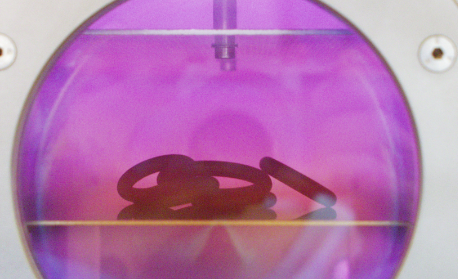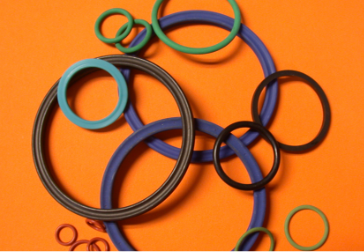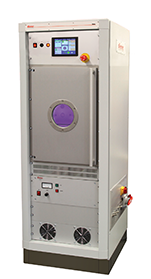Plasma Treatment Articles
Plasma Coating
|
3 min read

Manufacturers often have the problem of elastomeric components sticking together or sticking to working surfaces during handling, assembly, or processing operations. Often manufacturers need to feed elastomer components using a vibratory bowl when they are working with automation processes in the manufacturing industry. If there isn’t a low friction coating added to the elastomer components, they tend to stick together and not feed properly. In addition, O-rings can be damaged during assembly processes.
There are three main methods of assembly relating to elastomeric O-rings which can cause damage to the O-ring during handling. This damage can occur in each method whether it is inserting into a groove, a land, or a pocket. Often, O-rings are coated with a low friction coating to eliminate binding or pinching damage from assembly or the early stages of product operation or product break-in.

The primary benefit of applying a low friction coating on O-rings is the elimination of damage of the seals by mechanical pinching during assembly. With this coating, bowl feeding in bulk can really reduce labor costs.
Another advantage is that the plasma deposited coating is only microscopic in thickness. This very thin coating will eliminate flaking or chipping contamination that is common in other methods of lubrication. This method is a dry coating, so it will not smear or collect dirt, particulates or dust like a hydrocarbon or liquid based lubricant. From a user's point of view, this low friction coating will extend the life of O-rings by reducing the wear on the part. This process is highly repeatable and easy to scale up in a manufacturing process.
O-rings are loaded onto a tray or rotary processing container within a plasma vacuum chamber. Then O-rings are plasma cleaned and activated followed by a coating process step. After they are coated, the process chamber is vented, and parts are removed. The cleaning step can be done with oxygen plasma or any other process gas that is required to remove contaminants that may be present on the surface of the components. Once cleaning is completed, process gas used to clean is discontinued and gas feedstock of choice required for plasma coating is added into the vacuum chamber. The resulting product is plasma coated for a specific amount of time to achieve a desired thickness of uniform coating material on the O-rings.
One great feature of plasma coating is that mold release or foreign material on the O-rings can be removed or cleaned off during this manufacturing process prior to application of a low friction plasma coating. Material contamination is a really common problem in many manufacturing environments. Coating with a plasma system is a single process that can both clean and coat elastomeric material which reduces equipment costs and handling steps.

In order for a manufacturer to know how to determine the best coating for their manufacturing process, it is important to draw from the expertise of companies with experience in implementing plasma coating as a core competency. It is also important that these organizations have access to advanced plasma vacuum chambers and material science knowledge. One especially unique element that enables coating of O-rings on a large-scale level is a substantially sized mechanical tumbler that allows the manufacturer to rotate the entire vacuum chamber to create a uniform coating on all the parts in a single process.
After the plasma coating process is completed, O-rings are removed from the vacuum chamber and the vacuum chamber uses plasma to clean the chamber itself to remove residual coating material from the plasma process chamber. This cleaning step eliminates build-up of material on the process chamber walls. This efficient cleaning step removes the need for additional cleaning chemicals or labor during processing.
Low friction plasma coating of elastomeric components is a viable and proven solution to enable manufacturers to improve assembly efficiency. This plasma aided coating will also decrease scrap and reduce rework when using O-rings that have been coated with a low friction coating.
To learn more, please visit our vacuum chambers page. If you would like to speak to us about our vacuum chambers, please request a vacuum chamber quotation. To learn more about Thierry Corp, please download our company backgrounder eBook.
Comments